My
List |
Addition Date
|
Target
|
Mission
|
Instrument
|
Size
|

|
2022-03-18 |
|
Spitzer Space Telescope
|
Spitzer Space Telescope
|
3840x2160x3 |
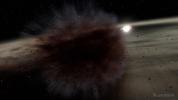
|
-
PIA25161:
-
Planetesimal Collison Around Star HD 166191 (Illustration)
Full Resolution:
TIFF
(9.714 MB)
JPEG
(282.3 kB)
|

|
2018-02-05 |
|
Spitzer Space Telescope
|
TRAPPIST
|
4500x3600x3 |
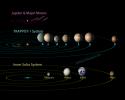
|
-
PIA22096:
-
TRAPPIST-1 Compared to Jovian Moons and Inner Solar System - Updated Feb. 2018
Full Resolution:
TIFF
(3.656 MB)
JPEG
(650.3 kB)
|

|
2018-02-05 |
|
Spitzer Space Telescope
|
TRAPPIST
|
4800x2700x3 |
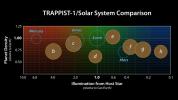
|
-
PIA22095:
-
Comparing TRAPPIST-1 to the Solar System
Full Resolution:
TIFF
(4.411 MB)
JPEG
(591.6 kB)
|

|
2018-02-05 |
|
Spitzer Space Telescope
|
TRAPPIST
|
6000x3500x3 |
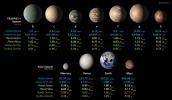
|
-
PIA22094:
-
TRAPPIST-1 Planet Lineup - Updated Feb. 2018
Full Resolution:
TIFF
(9.101 MB)
JPEG
(1.133 MB)
|

|
2017-08-17 |
|
Spitzer Space Telescope
|
|
4534x2550x3 |
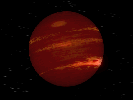
|
-
PIA21752:
-
Brown Dwarf Weather (Artist's Concept)

Full Resolution:
TIFF
(7.027 MB)
JPEG
(397.9 kB)
|

|
2017-02-22 |
|
Spitzer Space Telescope
|
TRAPPIST
|
3600x4500x3 |

|
-
PIA21429:
-
Transit Illustration of TRAPPIST-1
Full Resolution:
TIFF
(26.82 MB)
JPEG
(535.5 kB)
|

|
2017-02-22 |
|
Spitzer Space Telescope
|
TRAPPIST
|
4500x3600x3 |
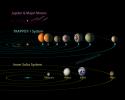
|
-
PIA21428:
-
TRAPPIST-1 Comparison to Solar System and Jovian Moons
Full Resolution:
TIFF
(3.612 MB)
JPEG
(646.9 kB)
|

|
2017-02-22 |
|
Spitzer Space Telescope
|
TRAPPIST
|
6000x3375x3 |
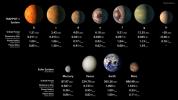
|
-
PIA21425:
-
TRAPPIST-1 Statistics Table
Full Resolution:
TIFF
(9.099 MB)
JPEG
(932.9 kB)
|

|
2016-11-10 |
OGLE-2015-BLG-1319
|
Spitzer Space Telescope
SWIFT
|
|
4800x2700x3 |
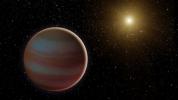
|
-
PIA21076:
-
Brown Dwarf Microlensing (Illustration)
Full Resolution:
TIFF
(18.01 MB)
JPEG
(460.3 kB)
|

|
2015-08-20 |
|
Spitzer Space Telescope
|
Spitzer Space Telescope
|
4800x2700x3 |
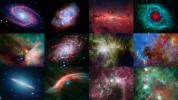
|
-
PIA19872:
-
NASA's Spitzer 12th Anniversary Space Calendar
Full Resolution:
TIFF
(38.9 MB)
JPEG
(1.945 MB)
|

|
2015-07-30 |
|
Spitzer Space Telescope
|
|
4800x2700x3 |
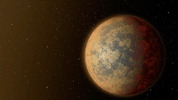
|
-
PIA19833:
-
Hot, Rocky World (Artist's Concept)

Full Resolution:
TIFF
(38.9 MB)
JPEG
(834.4 kB)
|

|
2015-07-30 |
|
Spitzer Space Telescope
|
|
2500x1325x3 |
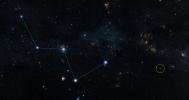
|
-
PIA19832:
-
Location of Nearest Rocky Exoplanet Known
Full Resolution:
TIFF
(9.941 MB)
JPEG
(292.6 kB)
|

|
2015-07-30 |
|
Spitzer Space Telescope
|
|
3200x1799x3 |
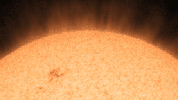
|
-
PIA19831:
-
Little Black Spot on the Star Today (Artist's Concept)

Full Resolution:
TIFF
(17.28 MB)
JPEG
(295.3 kB)
|

|
2015-01-27 |
|
Spitzer Space Telescope
|
IRAC
|
3000x1688x3 |
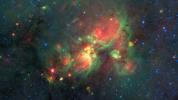
|
-
PIA18908:
-
Finding 'Yellowballs' in our Milky Way
Full Resolution:
TIFF
(15.2 MB)
JPEG
(413.7 kB)
|

|
2014-11-10 |
|
Spitzer Space Telescope
|
Spitzer Space Telescope
|
3300x4000x3 |

|
-
PIA18900:
-
Sibling Star Systems? Dust Structures Suggest So
Full Resolution:
TIFF
(39.62 MB)
JPEG
(590.8 kB)
|

|
2014-07-23 |
|
Kepler
Spitzer Space Telescope
|
|
3300x2400x3 |
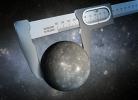
|
-
PIA18463:
-
Gauging an Alien World's Size (Artist Concept)
Full Resolution:
TIFF
(23.77 MB)
JPEG
(993.3 kB)
|

|
2014-03-20 |
|
Spitzer Space Telescope
|
IRAC
|
14400x8700x3 |
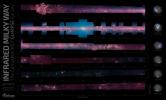
|
-
PIA17996:
-
GLIMPSE the Galaxy All the Way Around
Full Resolution:
TIFF
(375.9 MB)
JPEG
(9.296 MB)
|

|
2013-07-31 |
|
Spitzer Space Telescope
|
|
3840x2160x3 |
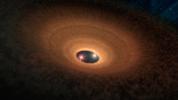
|
-
PIA17252:
-
Dusty Hula Hoop Rings 'Blinking' Stellar Duo (Illustration)
Full Resolution:
TIFF
(24.89 MB)
JPEG
(497.5 kB)
|

|
2013-05-06 |
|
Spitzer Space Telescope
|
|
4000x2667x3 |
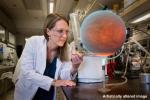
|
-
PIA17008:
-
An Astronomer's Fantasy: Planets in the Lab
Full Resolution:
TIFF
(32.01 MB)
JPEG
(1.025 MB)
|

|
2013-01-08 |
|
Herschel Space Observatory
Spitzer Space Telescope
|
|
4267x2400x3 |
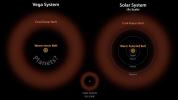
|
-
PIA16611:
-
Vega: Two Belts and the Possibility of Planets
Full Resolution:
TIFF
(30.74 MB)
JPEG
(304.7 kB)
|

|
2012-12-18 |
|
Spitzer Space Telescope
|
IRAC
|
4015x3637x3 |
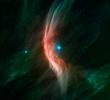
|
-
PIA16604:
-
Massive Star Makes Waves
Full Resolution:
TIFF
(43.82 MB)
JPEG
(1.115 MB)
|

|
2012-11-01 |
|
Spitzer Space Telescope
|
|
2100x2429x3 |

|
-
PIA16212:
-
Scenarios for the Evolution of Asteroid Belts
Full Resolution:
TIFF
(15.31 MB)
JPEG
(616.5 kB)
|

|
2012-07-18 |
|
Spitzer Space Telescope
|
|
5120x2880x3 |
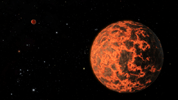
|
-
PIA15808:
-
Exoplanet is Extremely Hot and Incredibly Close (Artist's Concept)

Full Resolution:
TIFF
(44.26 MB)
JPEG
(821.4 kB)
|

|
2012-05-08 |
|
Spitzer Space Telescope
|
|
3000x2400x3 |
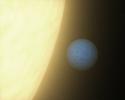
|
-
PIA15622:
-
First-of-Its-Kind Glimpse at a Super Earth (Artist Animation)
Full Resolution:
TIFF
(21.6 MB)
JPEG
(164 kB)
|

|
2012-05-08 |
|
Spitzer Space Telescope
|
IRAC
|
3000x2400x3 |
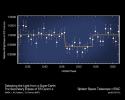
|
-
PIA15621:
-
Magician of a Planet Disappears to Reveal Itself
Full Resolution:
TIFF
(21.6 MB)
JPEG
(332.6 kB)
|

|
2011-10-19 |
|
Spitzer Space Telescope
|
|
4267x2400x3 |
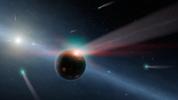
|
-
PIA14739:
-
It's Raining Comets (Artist's Concept)
Full Resolution:
TIFF
(30.72 MB)
JPEG
(328.2 kB)
|

|
2010-12-08 |
|
Spitzer Space Telescope
|
|
3200x2400x3 |
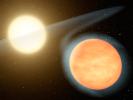
|
-
PIA13691:
-
Hot, Carbon-Rich Planet (Artist Concept)
Full Resolution:
TIFF
(23.04 MB)
JPEG
(276.4 kB)
|

|
2010-05-20 |
|
Spitzer Space Telescope
|
IRAC
|
2804x1870x3 |
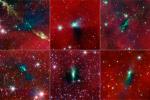
|
-
PIA13149:
-
Blobs House Twin Stars
Full Resolution:
TIFF
(15.73 MB)
JPEG
(558.6 kB)
|

|
2010-04-21 |
|
Spitzer Space Telescope
|
|
3300x2550x3 |
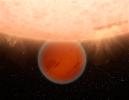
|
-
PIA13054:
-
Exotic Exoplanet (Artist's Concept)
Full Resolution:
TIFF
(25.25 MB)
JPEG
(331.7 kB)
|

|
2009-08-12 |
Cepheus B
|
Chandra X-ray Observatory
Spitzer Space Telescope
|
Chandra X-ray Telescope
IRAC
|
2749x3600x3 |

|
-
PIA12169:
-
Trigger-Happy Cloud
Full Resolution:
TIFF
(29.69 MB)
JPEG
(402.1 kB)
|

|
2009-08-10 |
HD 172555
|
Spitzer Space Telescope
|
|
3000x2400x3 |
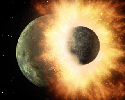
|
-
PIA12166:
-
Planetary Demolition Derby (Artist Concept)

Full Resolution:
TIFF
(21.6 MB)
JPEG
(362.1 kB)
|

|
2009-05-13 |
|
Spitzer Space Telescope
|
|
3000x2400x3 |
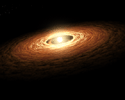
|
-
PIA12008:
-
Silicate Crystal Formation in the Disk of an Erupting Star (Artist Concept)

Full Resolution:
TIFF
(21.6 MB)
JPEG
(276.9 kB)
|

|
2009-01-28 |
|
Spitzer Space Telescope
|
IRAC
|
3000x2400x3 |
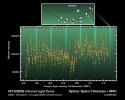
|
-
PIA11390:
-
Light from Red-Hot Planet
Full Resolution:
TIFF
(21.6 MB)
JPEG
(506.4 kB)
|

|
2008-10-27 |
Epsilon Eridani
|
Spitzer Space Telescope
|
|
3000x2400x3 |
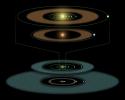
|
-
PIA11376:
-
Young Solar System in the Making (Artist Concept)
Full Resolution:
TIFF
(21.6 MB)
JPEG
(405.7 kB)
|

|
2008-10-27 |
Epsilon Eridani
|
Spitzer Space Telescope
|
|
3000x1600x3 |
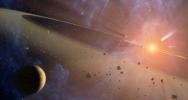
|
-
PIA11375:
-
Double the Rubble (Artist Concept)
Full Resolution:
TIFF
(14.4 MB)
JPEG
(249.1 kB)
|

|
2008-06-03 |
Milky Way
|
Spitzer Space Telescope
|
IRAC
MIPS
|
14400x10800x3 |
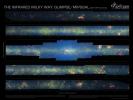
|
-
PIA10750:
-
Spitzer Finds Clarity in the Inner Milky Way
Full Resolution:
TIFF
(466.6 MB)
JPEG
(19.03 MB)
|

|
2008-06-03 |
Milky Way
|
Spitzer Space Telescope
|
IRAC
|
14400x10800x3 |
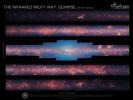
|
-
PIA10749:
-
Inner Milky Way Raging with Star Formation
Full Resolution:
TIFF
(466.6 MB)
JPEG
(26.13 MB)
|

|
2008-03-27 |
HD 189733b
|
Spitzer Space Telescope
|
|
1514x1499x3 |
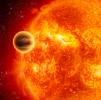
|
-
PIA10364:
-
NASA's Spitzer Finds Water Vapor on Hot, Alien Planet (Artist's Concept)
Full Resolution:
TIFF
(6.821 MB)
JPEG
(233.2 kB)
|

|
2008-02-11 |
Rho Ophiuchi
|
Spitzer Space Telescope
|
IRAC
|
6020x2905x3 |
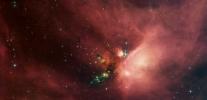
|
-
PIA10182:
-
Young Stars in Their Baby Blanket of Dust
Full Resolution:
TIFF
(52.46 MB)
JPEG
(1.065 MB)
|

|
2008-02-11 |
Rho Ophiuchi
|
Spitzer Space Telescope
|
IRAC
Multiband Imaging Photometer (MIPS)
|
6020x2905x3 |
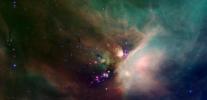
|
-
PIA10181:
-
Young Stars in Their Baby Blanket of Dust
Full Resolution:
TIFF
(52.46 MB)
JPEG
(812 kB)
|

|
2007-11-29 |
L1157
|
Spitzer Space Telescope
|
IRAC
|
1171x1444x3 |

|
-
PIA10119:
-
Baby Picture of our Solar System

Full Resolution:
TIFF
(5.079 MB)
JPEG
(154.9 kB)
|

|
2007-11-28 |
UX Tau A
|
Spitzer Space Telescope
|
|
3000x2400x3 |

|
-
PIA10118:
-
UX Tau A (Artist Concept)
Full Resolution:
TIFF
(21.6 MB)
JPEG
(330.7 kB)
|

|
2007-10-03 |
|
Spitzer Space Telescope
|
|
3000x2400x3 |
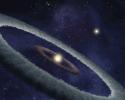
|
-
PIA09931:
-
Birth of an Earth-like Planet (Artist Xoncept)
Full Resolution:
TIFF
(21.6 MB)
JPEG
(281.9 kB)
|

|
2007-08-29 |
NGC 1333
|
Spitzer Space Telescope
|
|
3200x2400x3 |
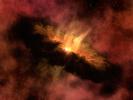
|
-
PIA09967:
-
Water's Early Journey in a Solar System (Artist Concept)
Full Resolution:
TIFF
(23.04 MB)
JPEG
(336.4 kB)
|

|
2007-08-29 |
NGC 1333
|
Spitzer Space Telescope
|
IRAC
|
3000x2400x3 |

|
-
PIA09966:
-
Steamy Solar System
Full Resolution:
TIFF
(21.6 MB)
JPEG
(167.5 kB)
|

|
2007-08-24 |
Helix Nebula
|
Spitzer Space Telescope
|
IRAC
|
4370x4070x3 |
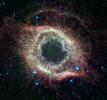
|
-
PIA09962:
-
Spitzer Celebrates Fourth Anniversary with Celestial Fireworks
Full Resolution:
TIFF
(53.36 MB)
JPEG
(2.378 MB)
|

|
2007-07-11 |
HD 189733b
|
Spitzer Space Telescope
|
Infrared Spectrograph (IRS)
|
3000x2136x3 |
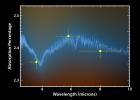
|
-
PIA09715:
-
Exoplanet Forecast: Hot and Wet
Full Resolution:
TIFF
(19.22 MB)
JPEG
(259.2 kB)
|

|
2007-05-09 |
HD 149026b
|
Spitzer Space Telescope
|
|
638x479x3 |
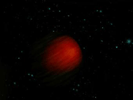
|
-
PIA09378:
-
Blacker than Black (Artist's Concept)

Full Resolution:
TIFF
(918 kB)
JPEG
(12.32 kB)
|

|
2007-05-09 |
HD 189733b
|
Spitzer Space Telescope
|
IRAC
|
640x467x3 |
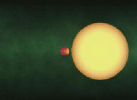
|
-
PIA09377:
-
How to Map a Very Faraway Planet (animation)

Full Resolution:
TIFF
(897.8 kB)
JPEG
(11.68 kB)
|

|
2007-05-09 |
HD 189733b
|
Spitzer Space Telescope
|
IRAC
|
640x473x3 |
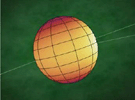
|
-
PIA09376:
-
First Map of Alien World (animation)

Full Resolution:
TIFF
(909.3 kB)
JPEG
(23.38 kB)
|

|
2007-03-29 |
|
Spitzer Space Telescope
|
|
3000x2400x3 |
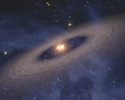
|
-
PIA09229:
-
Two Suns Raise Family of Planetary Bodies (Artist Animation)

Full Resolution:
TIFF
(21.6 MB)
JPEG
(309.2 kB)
|

|
2007-03-29 |
|
Spitzer Space Telescope
|
|
3000x2000x3 |
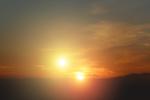
|
-
PIA09228:
-
Alien Sunset (Artist Concept)
Full Resolution:
TIFF
(18 MB)
JPEG
(239.4 kB)
|

|
2007-02-21 |
|
Spitzer Space Telescope
|
|
3000x2400x3 |
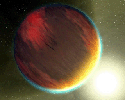
|
-
PIA09200:
-
Exotic Atmospheres
(Artist Concept)

Full Resolution:
TIFF
(21.6 MB)
JPEG
(257.1 kB)
|

|
2007-02-21 |
|
Spitzer Space Telescope
|
Infrared Spectrograph (IRS)
|
3000x2400x3 |
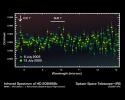
|
-
PIA09197:
-
Cracking the Code of Faraway Worlds
Full Resolution:
TIFF
(21.6 MB)
JPEG
(399.2 kB)
|

|
2007-02-21 |
|
Spitzer Space Telescope
|
|
3000x2400x3 |

|
-
PIA09196:
-
How to Pluck a Spectrum from a Planet
Full Resolution:
TIFF
(21.6 MB)
JPEG
(298.3 kB)
|

|
2007-01-26 |
|
Spitzer Space Telescope
|
|
3000x2400x3 |
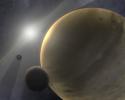
|
-
PIA09117:
-
Gas Giants Form Quickly (Artist Concept)
Full Resolution:
TIFF
(21.6 MB)
JPEG
(205.5 kB)
|

|
2006-10-27 |
|
Spitzer Space Telescope
|
IRAC
Multiband Imaging Photometer (MIPS)
|
3000x2300x3 |
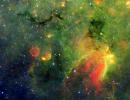
|
-
PIA01318:
-
Where Galactic Snakes Live
Full Resolution:
TIFF
(20.7 MB)
JPEG
(1.154 MB)
|

|
2006-10-12 |
|
Spitzer Space Telescope
|
|
2400x3200x3 |

|
-
PIA01938:
-
Exotic World Blisters Under the Sun (Artist Concept)
Full Resolution:
TIFF
(23.07 MB)
JPEG
(308.3 kB)
|

|
2006-10-03 |
|
Spitzer Space Telescope
|
MIPS
|
1500x558x3 |
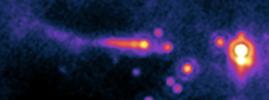
|
-
PIA01319:
-
A Star's Close Encounter
Full Resolution:
TIFF
(839.7 kB)
JPEG
(43.53 kB)
|

|
2006-04-05 |
|
Spitzer Space Telescope
|
|
3000x2400x3 |

|
-
PIA08042:
-
Extreme Planets (Artist Concept)
Full Resolution:
TIFF
(21.6 MB)
JPEG
(351.9 kB)
|

|
2006-02-08 |
R 66
|
Spitzer Space Telescope
|
Infrared Spectrometer (IRS)
|
5140x2400x3 |

|
-
PIA08006:
-
Supersized Disk (Artist's Concept)
Full Resolution:
TIFF
(37.01 MB)
JPEG
(435.5 kB)
|

|
2006-01-11 |
G29-38
|
Spitzer Space Telescope
|
Infrared Spectrometer (IRS)
|
3000x2400x3 |
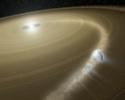
|
-
PIA03652:
-
Comet 'Bites the Dust' Around Dead Star (Artist Concept)
Full Resolution:
TIFF
(21.6 MB)
JPEG
(298.4 kB)
|

|
2005-12-20 |
IRS 46
|
Spitzer Space Telescope
|
|
3000x2400x3 |
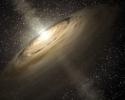
|
-
PIA03243:
-
Portrait of Our Dusty Past (Artist Concept)
Full Resolution:
TIFF
(21.6 MB)
JPEG
(361.6 kB)
|

|
2005-07-01 |
Comet
|
Spitzer Space Telescope
|
|
646x486x3 |
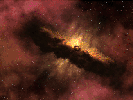
|
-
PIA02107:
-
Genesis of a Comet (Artist's Concept)

Full Resolution:
TIFF
(943.1 kB)
JPEG
(30.67 kB)
|

|
2005-04-20 |
HD 69830
|
Spitzer Space Telescope
|
|
3000x2400x3 |
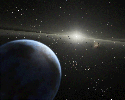
|
-
PIA07854:
-
Band of Rubble (Artist Concept)

Full Resolution:
TIFF
(21.6 MB)
JPEG
(350.6 kB)
|

|
2005-04-20 |
HD 69830
|
Spitzer Space Telescope
|
|
3200x2400x3 |
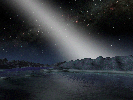
|
-
PIA07853:
-
Alien Asteroid Belt Compared to our Own (Artist Concept)

Full Resolution:
TIFF
(23.04 MB)
JPEG
(451.6 kB)
|

|
2005-04-20 |
HD 69830
|
Spitzer Space Telescope
|
Infrared Spectrograph (IRS)
|
2766x2019x3 |
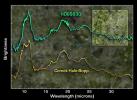
|
-
PIA07852:
-
Super-Comet or Big Asteroid Belt?
Full Resolution:
TIFF
(16.75 MB)
JPEG
(375.2 kB)
|

|
2005-03-22 |
|
Spitzer Space Telescope
|
|
2783x1739x3 |

|
-
PIA07490:
-
Blinded by the Light (Artist Concept)
Full Resolution:
TIFF
(11.48 MB)
JPEG
(252.5 kB)
|

|
2005-02-08 |
OTS 44
|
Spitzer Space Telescope
|
|
2580x2010x3 |

|
-
PIA07336:
-
'Mini-Me' Solar System (Artist Concept)
Full Resolution:
TIFF
(6.098 MB)
JPEG
(386.3 kB)
|

|
2005-01-11 |
Encke
|
Spitzer Space Telescope
|
MIPS
|
2154x2154x3 |
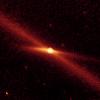
|
-
PIA07222:
-
Riding a Trail of Debris
Full Resolution:
TIFF
(6.884 MB)
JPEG
(215.1 kB)
|

|
2004-12-09 |
|
Spitzer Space Telescope
|
|
1364x1024x3 |
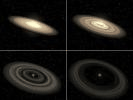
|
-
PIA07099:
-
The Evolution of a Planet-Forming Disk (Artist's Concept Animation)

Full Resolution:
TIFF
(4.195 MB)
JPEG
(75.87 kB)
|

|
2004-12-09 |
|
Spitzer Space Telescope
|
|
1386x956x3 |
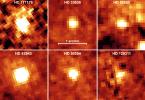
|
-
PIA07098:
-
Is There Anybody Home?
Full Resolution:
TIFF
(1.3 MB)
JPEG
(126 kB)
|

|
2004-12-09 |
|
Spitzer Space Telescope
|
|
3000x1688x3 |
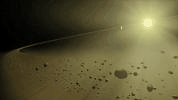
|
-
PIA07097:
-
A Distant Solar System (Artist's Concept Animation)

Full Resolution:
|

|
2004-12-09 |
|
Spitzer Space Telescope
|
|
3000x1688x3 |
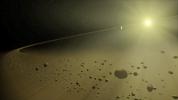
|
-
PIA07096:
-
A Distant Solar System (Artist's Concept)
Full Resolution:
TIFF
(7.518 MB)
JPEG
(308.1 kB)
|

|
2004-05-27 |
|
Spitzer Space Telescope
|
|
1600x1200x3 |
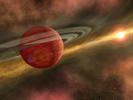
|
-
PIA05988:
-
Out of the Dust, A Planet is Born (Artist Concept)
Full Resolution:
TIFF
(4.995 MB)
JPEG
(111.9 kB)
|

|
2003-12-18 |
|
Spitzer Space Telescope
|
MIPS
|
658x430x3 |
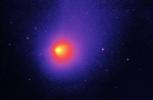
|
-
PIA04943:
-
Comet Schwassmann-Wachmann I
Full Resolution:
TIFF
(611.8 kB)
JPEG
(26.98 kB)
|

|
2003-12-18 |
|
Spitzer Space Telescope
|
MIPS
|
1424x944x3 |
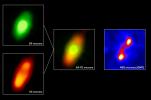
|
-
PIA04942:
-
Circumstellar Disk Around Fomalhaut
Full Resolution:
TIFF
(789.1 kB)
JPEG
(58.51 kB)
|

|
2003-05-15 |
|
Spitzer Space Telescope
|
|
606x441x3 |
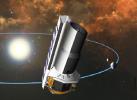
|
-
PIA04497:
-
Help Stamp Out Boring Space Acronyms
Full Resolution:
TIFF
(661.1 kB)
JPEG
(37.43 kB)
|

 Planetary Data System
Planetary Data System


























































































